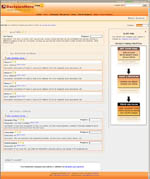how to use DecisionHero.com
Become a Decision Hero!
Decision making can be an easy and empowering experience — and we think it should be.
Here at DecisionHero.com, the goal and decision are always yours — we just make the process consistent, fast, and smart.
Decisions are calculated using a verified mathematical model used in high-stakes environments like governments and enterprises — now in your hands.
Explore Public GoalsShort Version
Create a goal, enter your options and decision criteria, answer a few simple prompts, and get a complete report based on your judgment.
Get Decision Report
Your decision is calculated and shown in a complete report with full transparency.
Use Public Goals as Embeddable Tools
Public goals are decision templates you can embed in your site as smart forms — helping your clients choose the best option based on their unique needs. They work like mini wizards — powered by your expertise.
Browse Public GoalsNeed the Full Walkthrough?
This section goes deeper into the full process behind DecisionHero.com — with screenshots, examples, and a breakdown of how the decision engine works.
Start by setting your goal. This could be a decision you or your client needs to make — like "Which marketing strategy should we prioritize?" or "Which vendor offers the most ROI?"
You can either create your own goal or choose from public goals.
Example: "Choose a CRM for our sales team."
You'll be asked to enter a name and optional description.
Criteria are the dimensions you’ll compare options on — cost, onboarding time, UX, integrations, etc.
Measurable Criteria
Some criteria like price or setup time are measurable. These don’t require subjective input — you’ll just input a number.
Note: We recommend using price as an option attribute (not a criteria) so the engine can calculate benefit/cost ratios.
After input is complete, the system presents a detailed report with weighted scores, rankings, and benefit/cost ratios if available.
The output isn’t just a top pick — it’s a transparent breakdown that shows how each choice compares across all factors.
How many comparisons will I need to make?
Number of Options × (Options - 1) / 2 × Criteria






